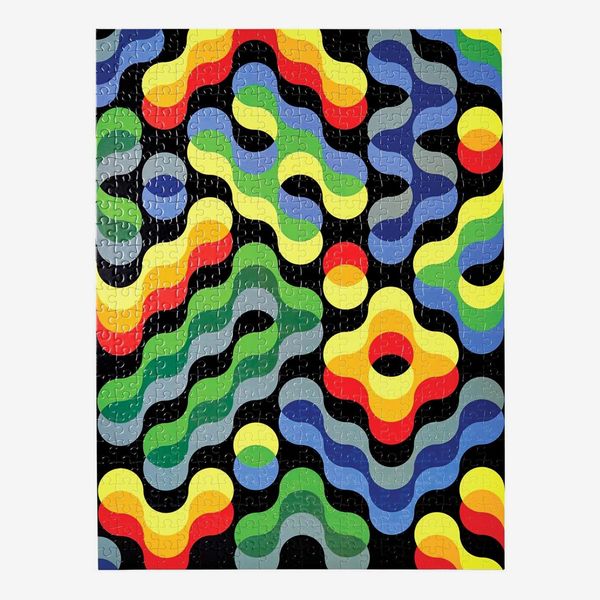The Fascinating World of Modern Puzzles: From Classics to Abstract Creations

Puzzles have been mentally engaging for centuries, providing the ultimate combination of amusement, challenge, and relaxation. From the earliest wooden jigsaw puzzles of the 18th century to the advanced computerized puzzles of today, this activity has grown into a worldwide pastime for all ages.
Over the past decade, puzzle enthusiasts have experimented with new levels of imagination — from breathtaking art to brain-twisting patterns of logic — and puzzles have evolved into a hobby interest and a work of art. One of the most thrilling of the new forms is Abstract Puzzles
, in which shape, color, and imagination collaborate to produce striking visual challenges.
The Evolution of Puzzles: A Quick Look Back
From Maps to Masterpieces
The history of the puzzle evolved in the 1760s when cartographer John Spilsbury developed the first jigsaw puzzle by cutting a map into pieces to instruct students in geography. The first learning device quickly became a pastime craze.
By the early 20th century, puzzles were being mass-produced, using cardboard instead of wood and scenes extending beyond landscapes to works of art from famous paintings. Families would gather around the dining table to put together beautiful scenes, and thus puzzles became a symbol of patience and collaboration.
Today, the puzzle business remains on the upswing, blending old-fashioned know-how with cutting-edge machinery. Puzzles’ websites and phone apps introduce the old pastime to cyber space, where tens of millions may enjoy it anytime, anywhere.
Why Puzzles Continue to Be Popular
More Than a Hobby
Puzzles are more than a source of fun — they’re a full-brain workout. Whether you’re assembling a thousand-piece jigsaw or solving a digital logic grid, puzzles engage memory, reasoning, and focus.
Here are a few key benefits that keep puzzling timelessly popular:
- Cognitive Enhancement: Regular puzzling improves problem-solving skills and boosts concentration.
- Stress Relief: The repetitive, mindful process of fitting pieces together promotes relaxation and mental calm.
- Creativity Boost: Visual puzzles, and especially Abstract Puzzles, encourage imagination and aesthetic sense.
- Social Connection: Cooperative puzzle-solving with family members fosters teamwork and collaborative success.
- Digital Adaptability: The availability of mobile puzzle games makes the experience viable for all to participate anywhere.
The Rise of Abstract and Artistic Puzzles
A New Era of Puzzle Art
Classic puzzles offer us well-known images — landscape, animal, monument, or portrait. The new abstract puzzles eliminate the creative rules. Instead of pictures recognizable at sight, the abstract puzzles are made up of forms, patterns, and gradients that present entirely different puzzles to the puzzle solver.
Abstract Puzzles provide a new experience since there are no clear-cut boundaries or objects to follow. Every item is part of a lush mosaic that challenges color recognition, spatial reasoning, and tenacity. The payoff? A calming and richly rewarding journey through visual discovery.
Why Abstract Puzzles Are Special
Abstract puzzles are especially well-suited for the following reasons:
- They foster awareness. Without an image to follow, solvers concentrate only on color and shape.
- They are contemporary works of art. Any designer employs puzzles as artwork to be displayed on a wall.
- They can accommodate any level of skill. Abstract puzzles can be as relaxing or as difficult as you prefer, whether 100 or 2,000 pieces.
- They provide a personal sensory experience. The interaction between shape and color creates a visual rhythm that cannot be created with normal photographs.
This balance of challenge and creativity has rendered abstract puzzles a hit among contemporary puzzle lovers and art lovers both.
Digital Puzzles: The Future of Play
From Pieces to Interactive Platforms
With technology racing ahead at breakneck speed, puzzles have entered a new age of interactivity. Digital platforms mimic the tactile joy of completing jigsaws but introduce functionalities such as zoom, tips, and auto-save progress.
Virtual puzzle museums like PuzzleFree.Game offer users the potential to play a growing variety of puzzle subjects — from nature and architecture to space and abstract shapes. Player interaction is also made easier in virtual settings, where players can post their scores and view comparisons in timed games.
Advantages of Web Puzzling
- Convenience: Play anywhere without concern for lost pieces.
- Accessibility: Online puzzles are available on any platform for any age.
- Customization: Select difficulty levels, designs, and sizes to fit your mood.
- Sustainability: Puzzles electrically cut waste and offer limitless enjoyment.
As technology continues to advance in puzzles, the union of art and science continues to enhance what we do with this age-old hobby that dates back thousands of years.
How to Pick the Ideal Puzzle
A Few Tips for Any Puzzle Enthusiast
Choosing the appropriate puzzle is a question of your skill, the time you have available, and your own desires. These are some brief guidelines to guide you:
- Beginners: Begin with simple-picture puzzles that have less than 500 pieces.
- Intermediate Players: Choose art or abstract patterns with 1,000–1,500 pieces.
- Smart Players: Experiment with gradient or pattern-type puzzles that test patience and visual attention.
- Computer Players: Search web-based puzzle sites that offer unlimited creative freedom.
Remember, the best puzzle is one that fascinates you, calms you, and keeps you engaged.
The Timeless Pleasure of Puzzling
Cutouts carved into wood were replaced by computer-made mosaics, but the purpose is still the same: to challenge the brain, calm the soul, and bring people together. A classic landscape or an abstract design that mesmerizes is there for every individual.
In the world of modern puzzle art, Abstract Puzzles
be a symbol of creativity and concentration — the perfect combination of playfulness and concentration.